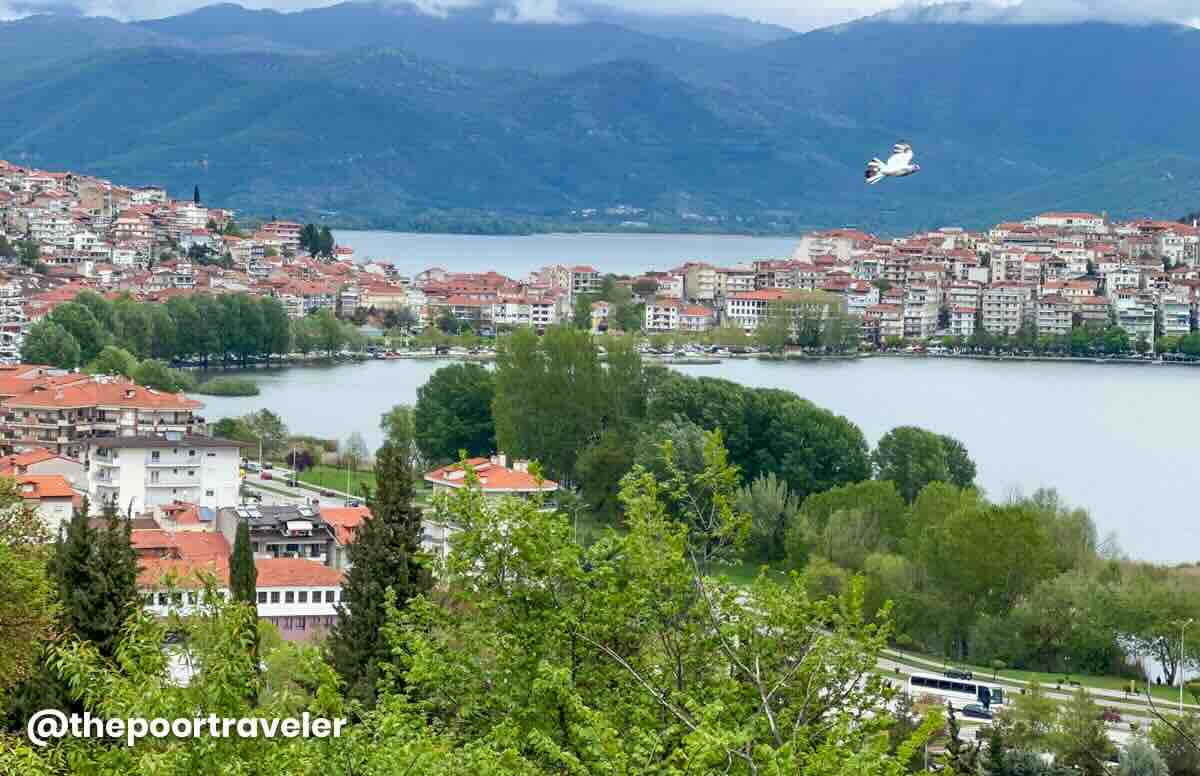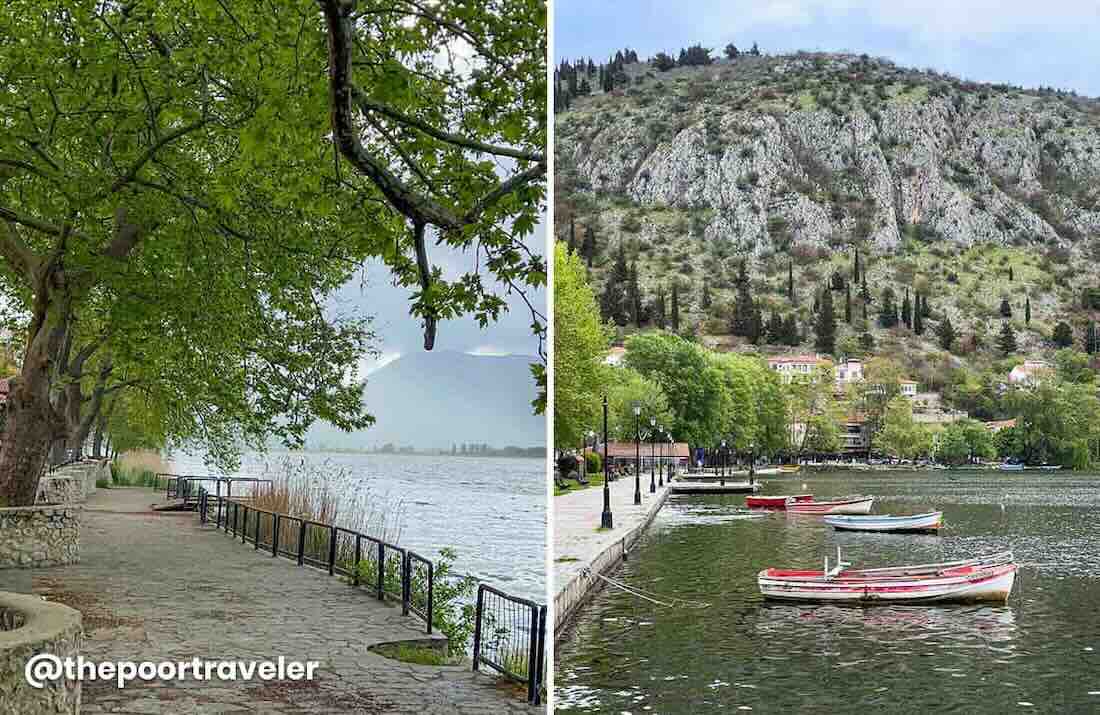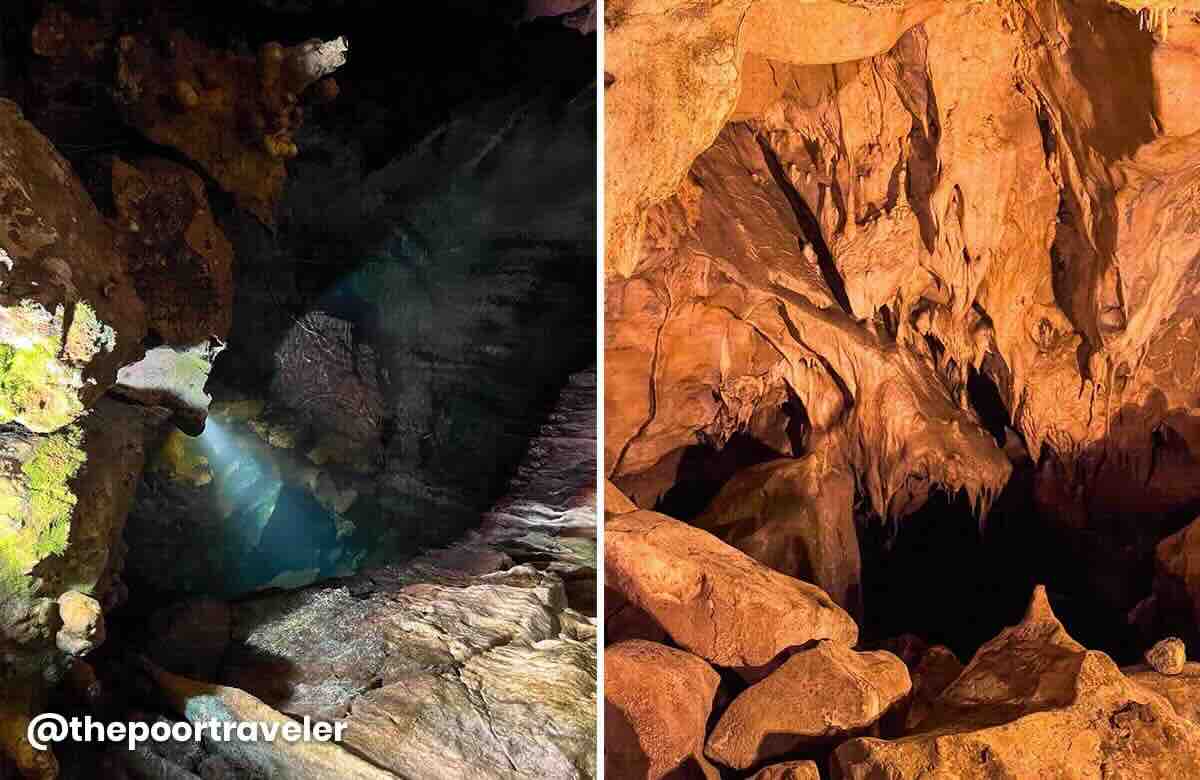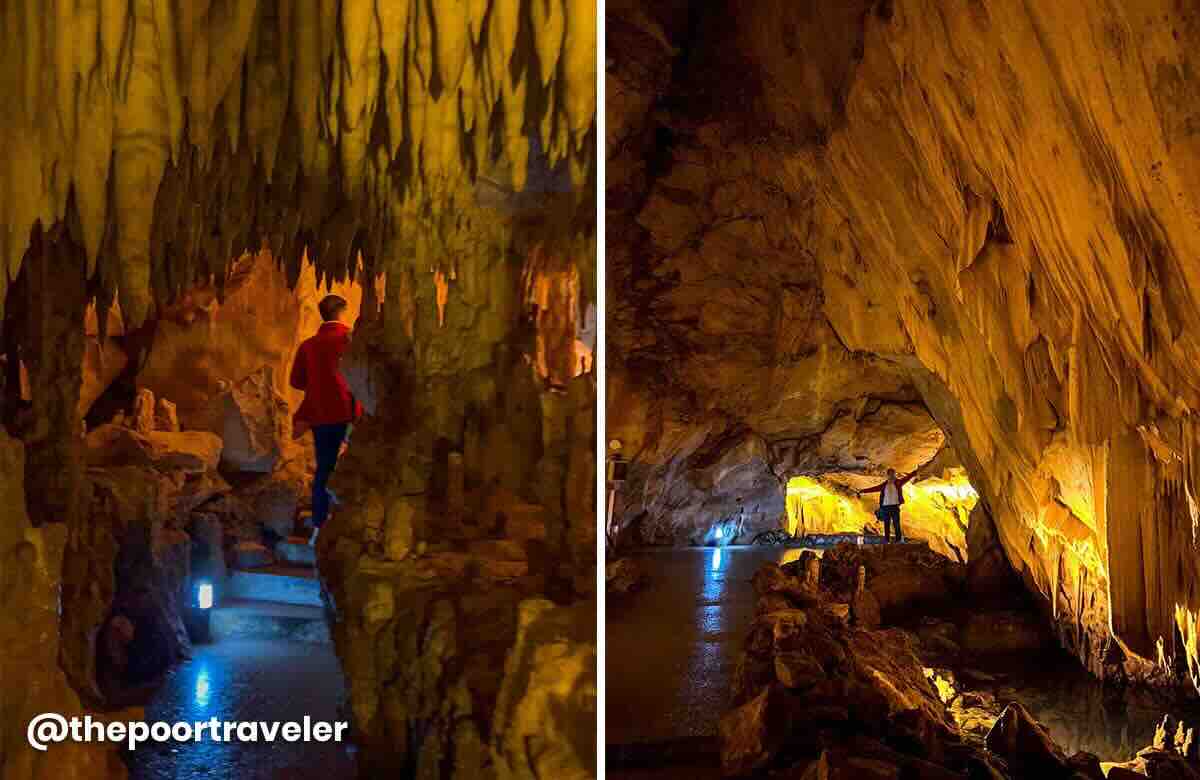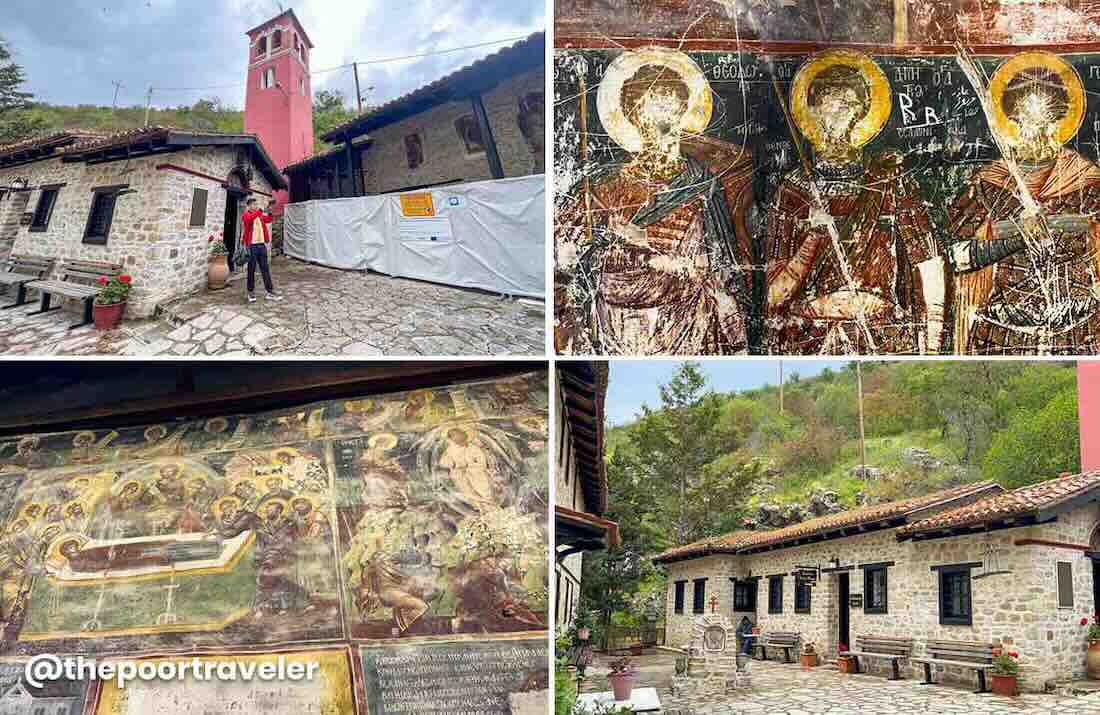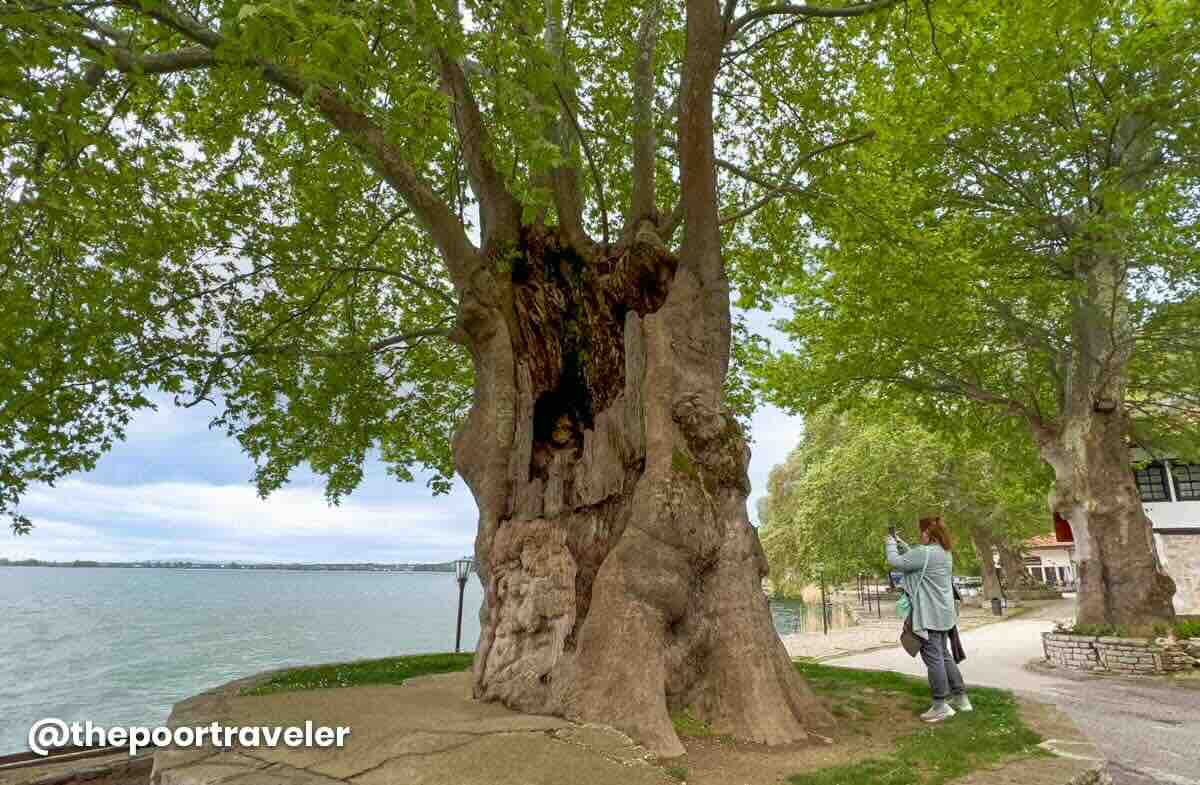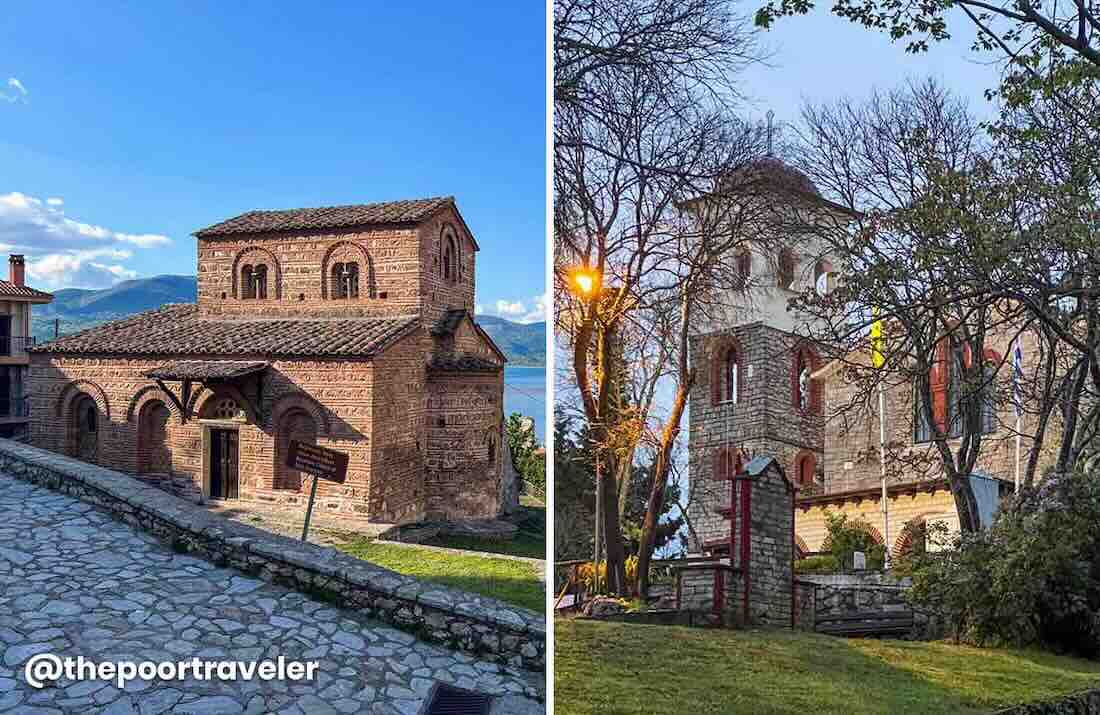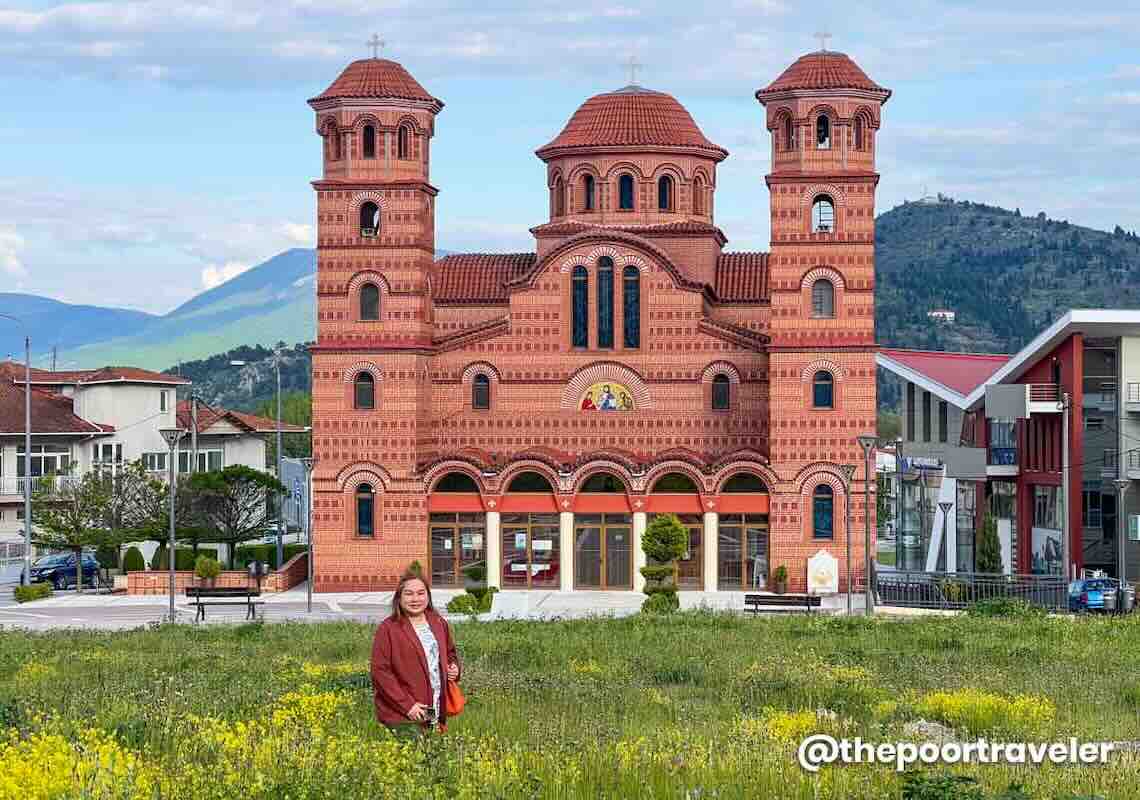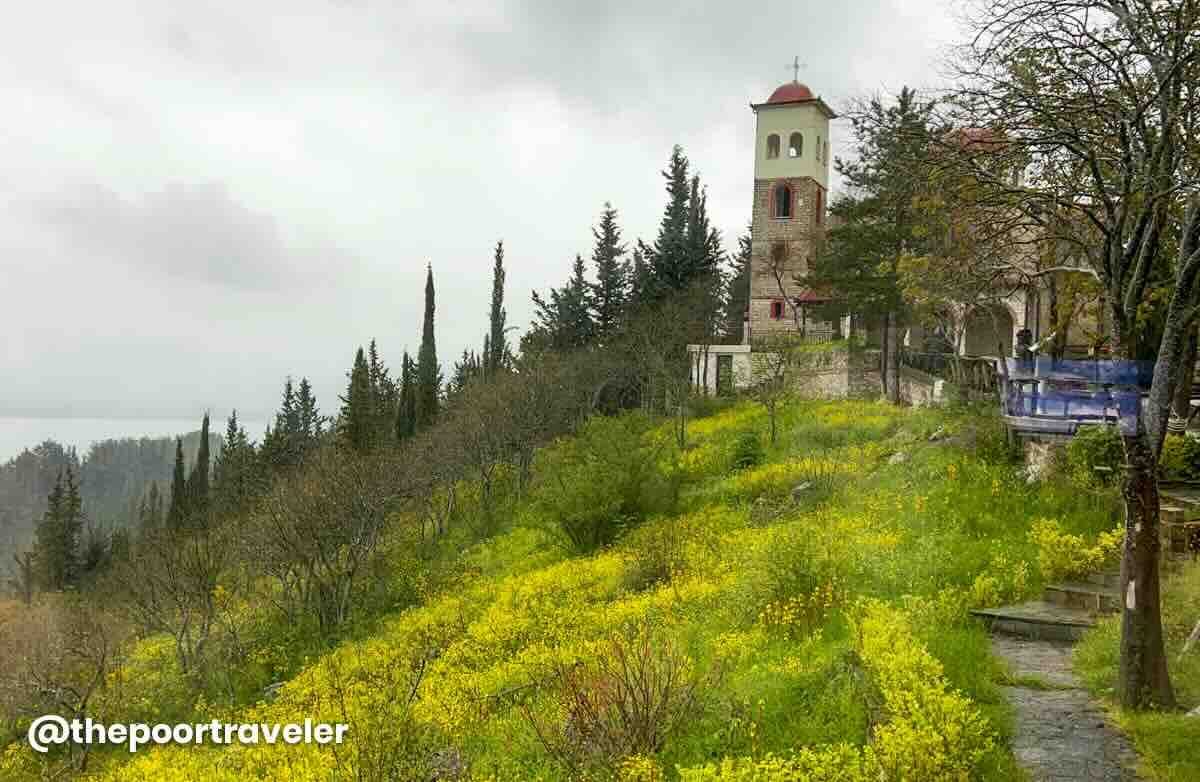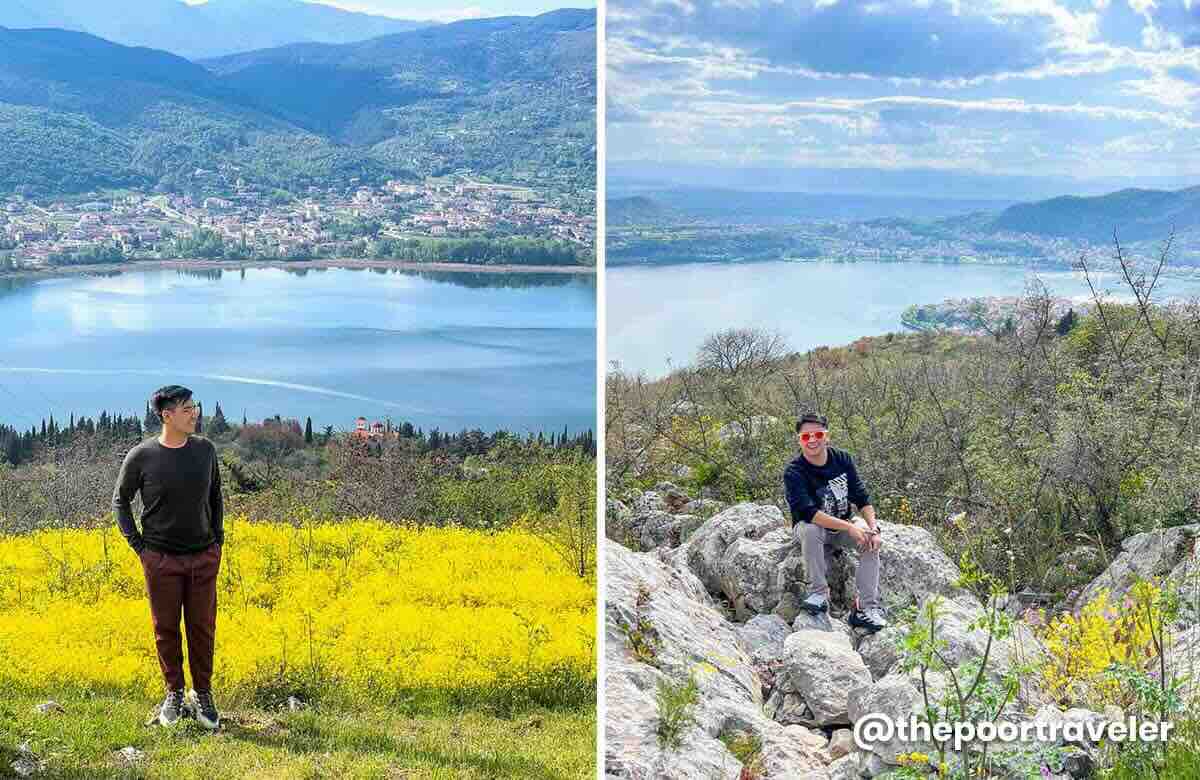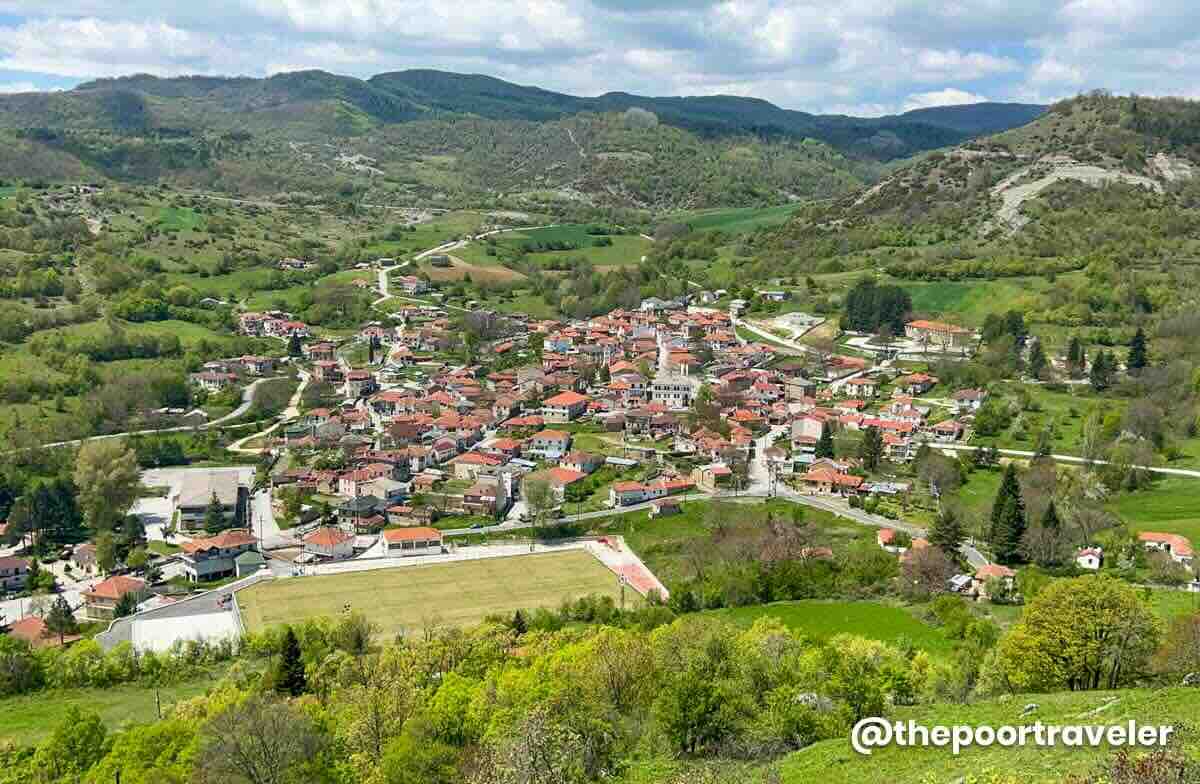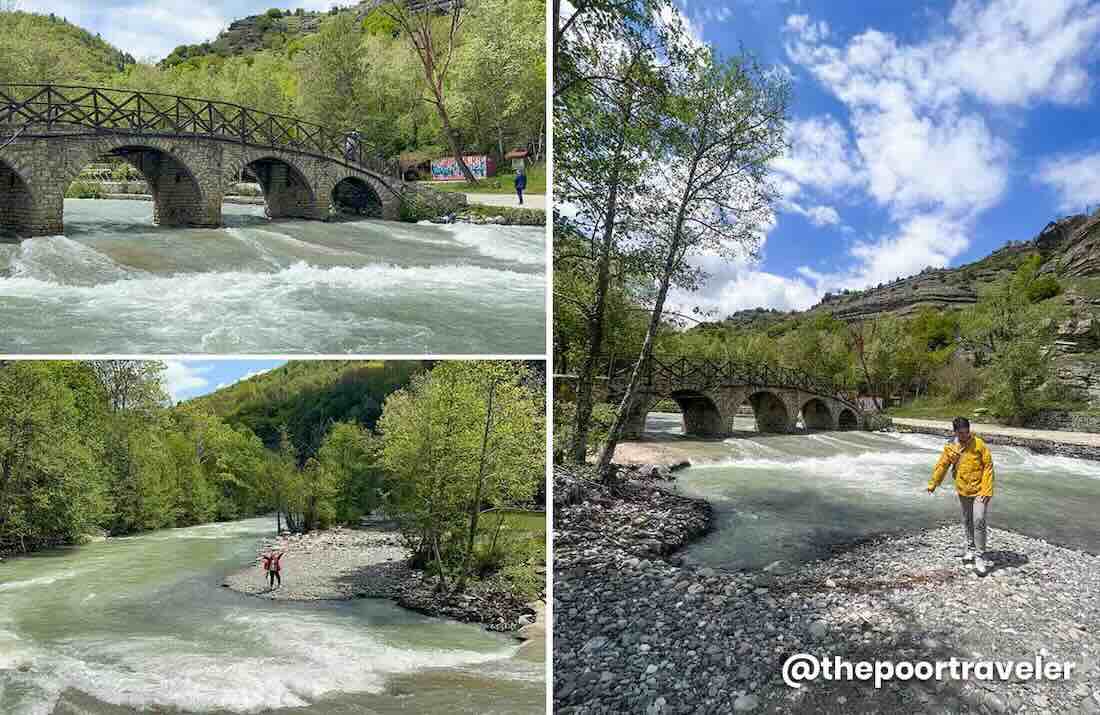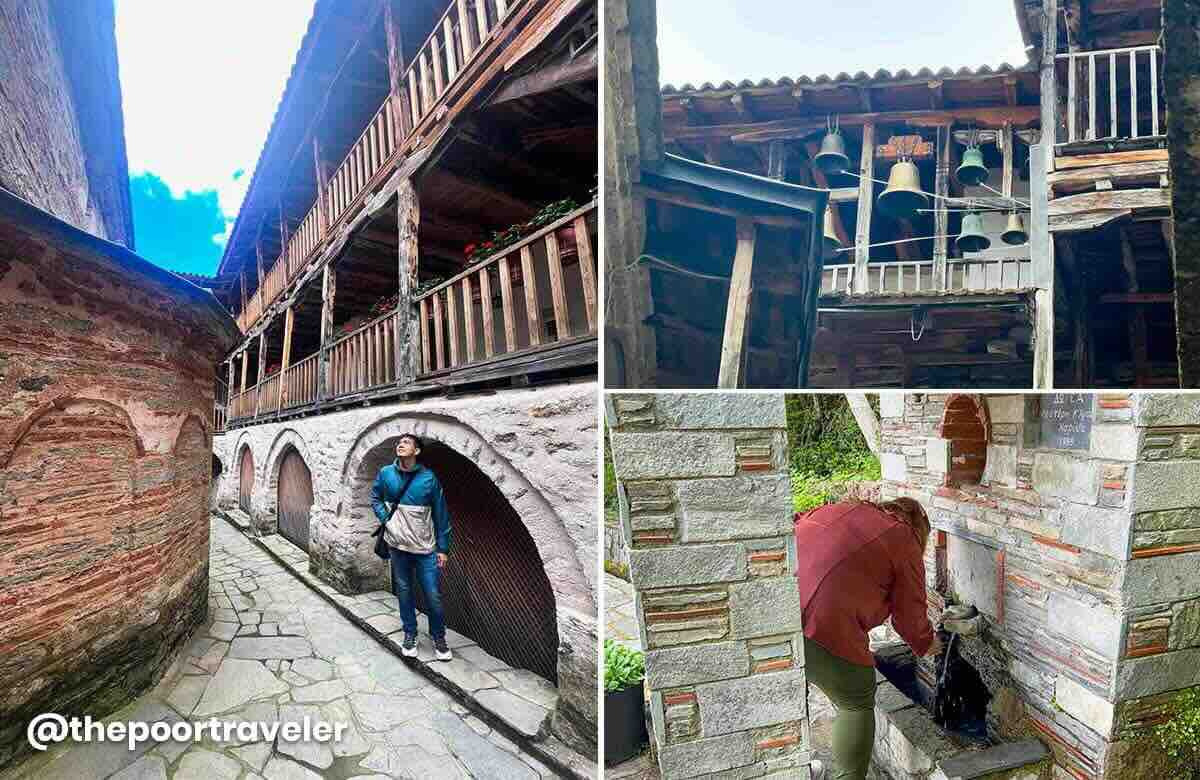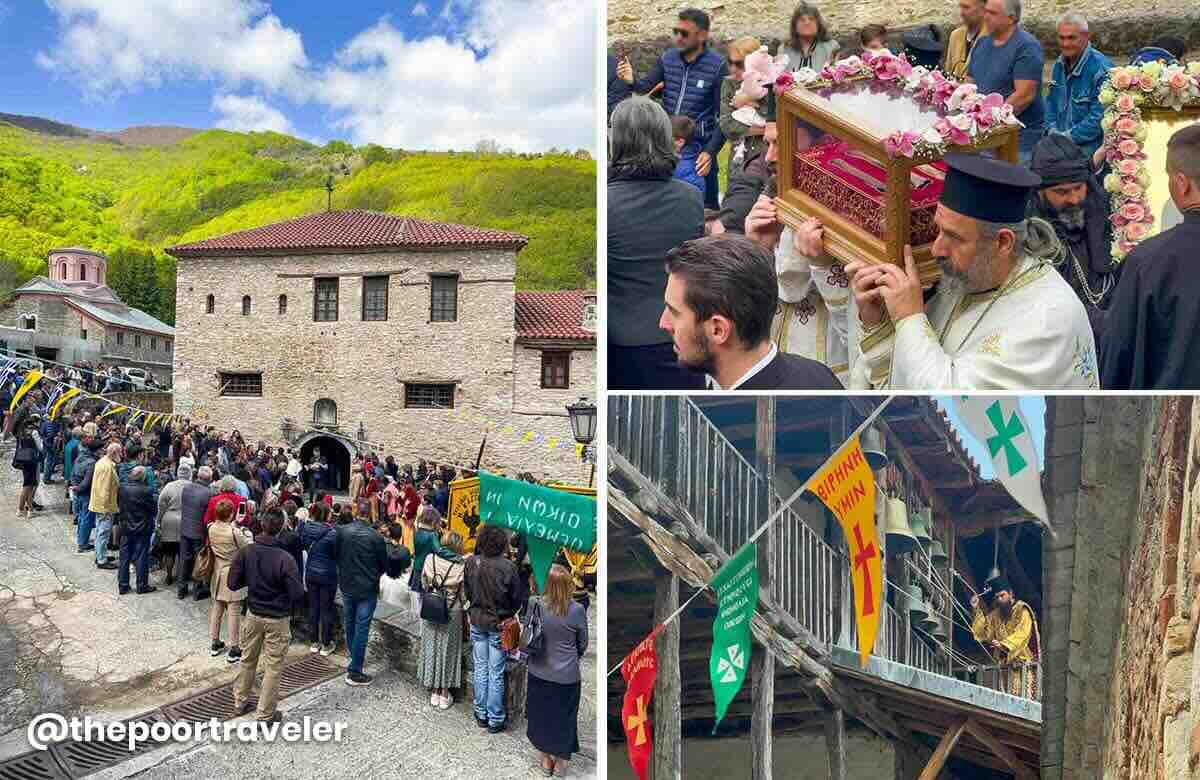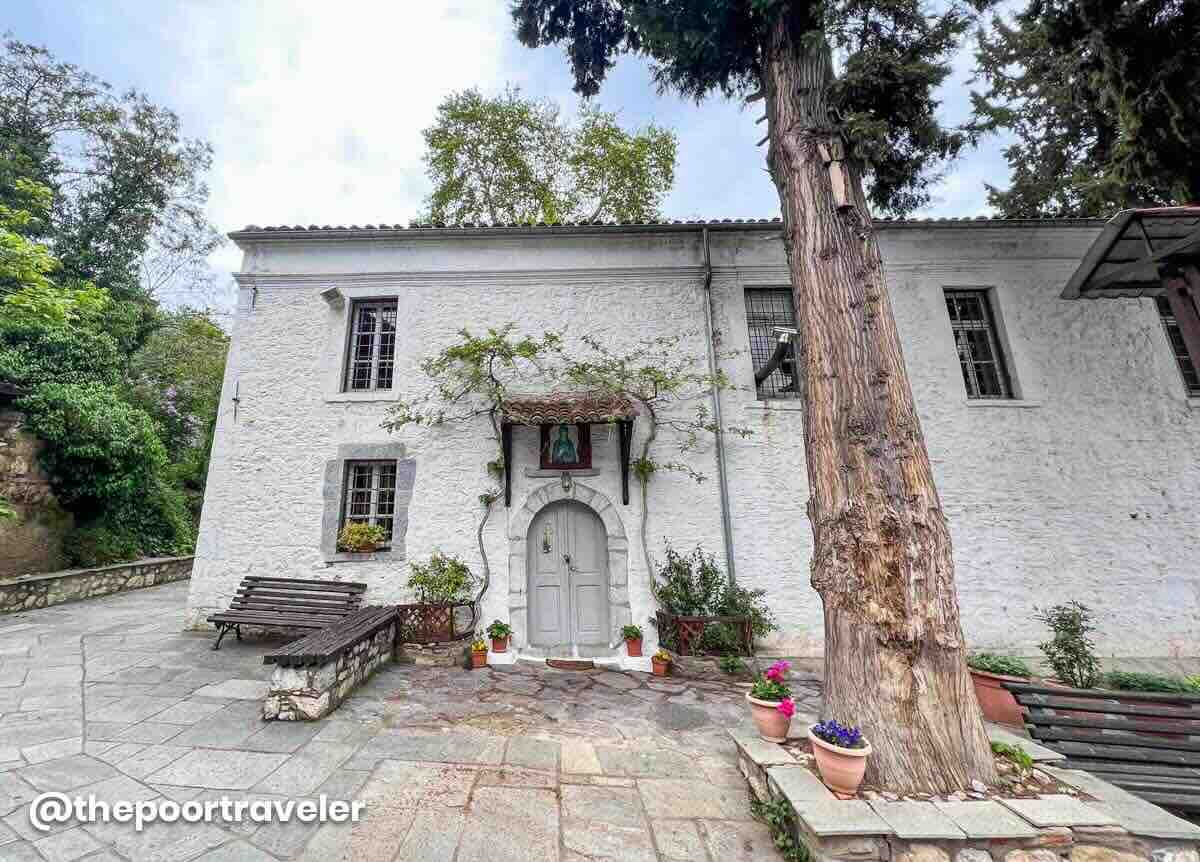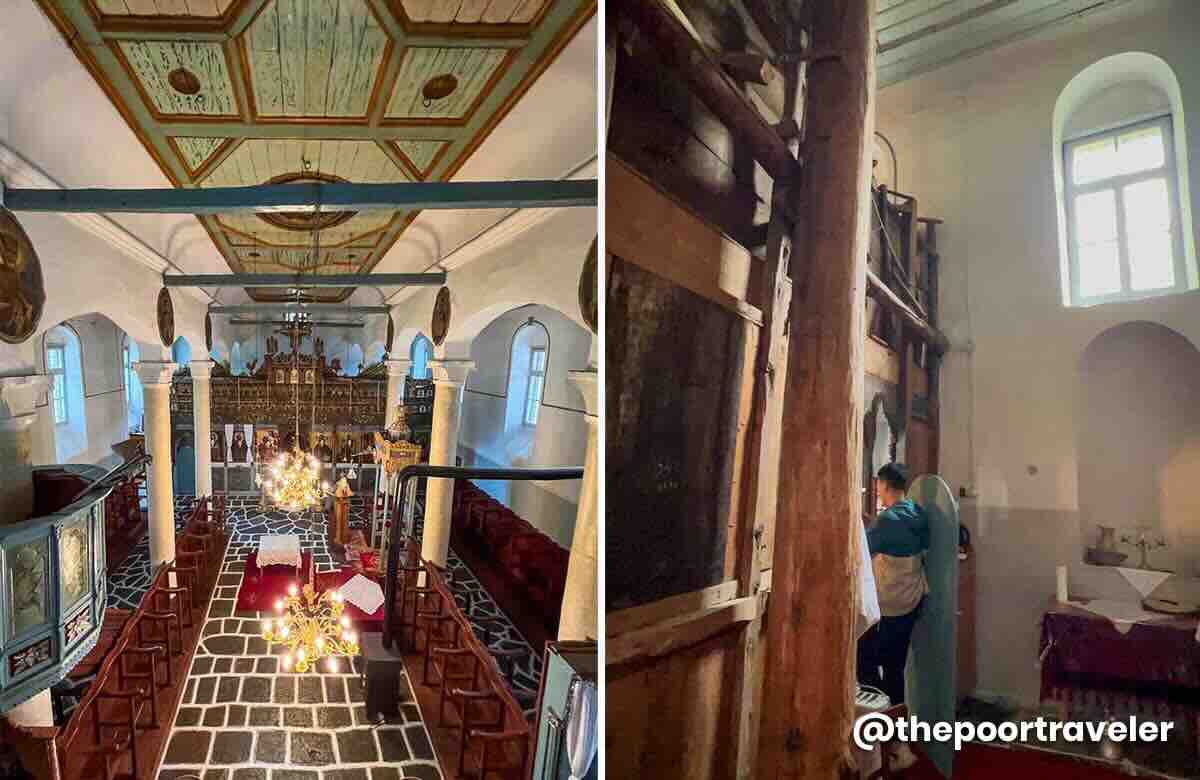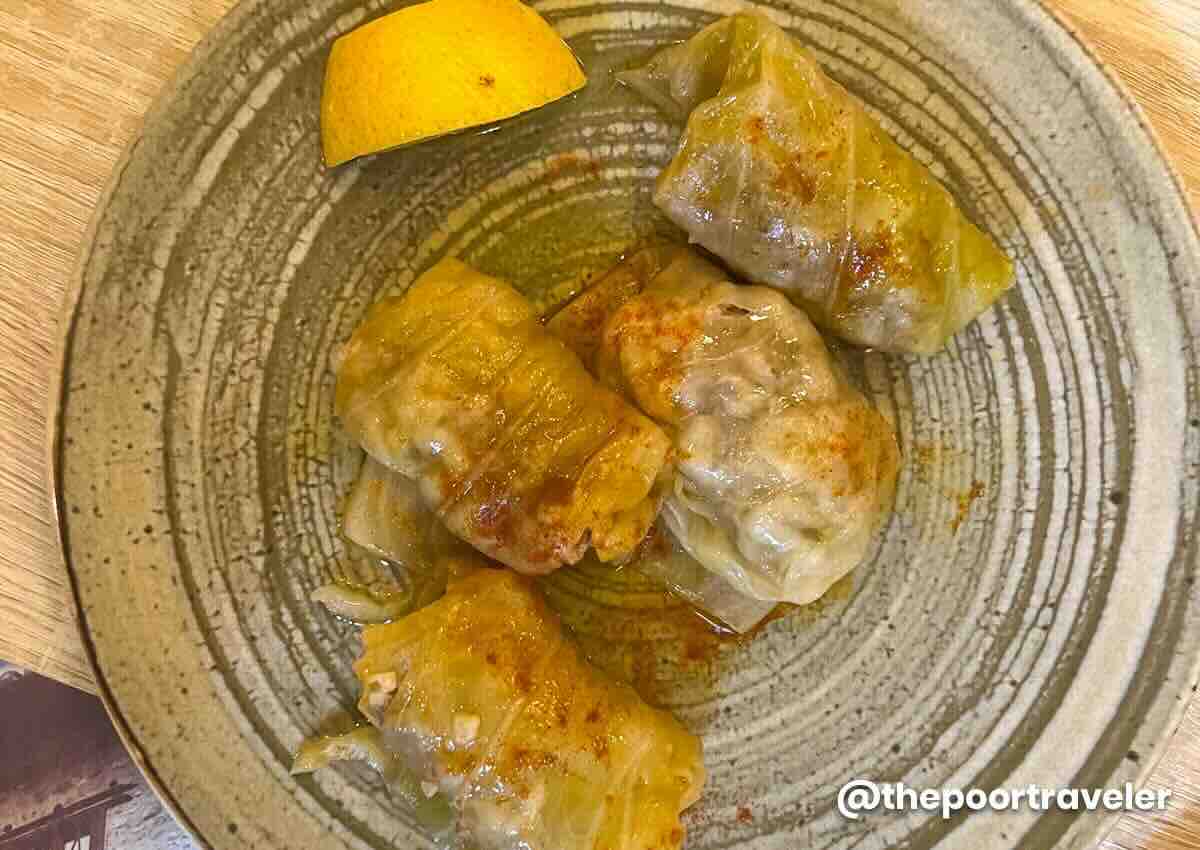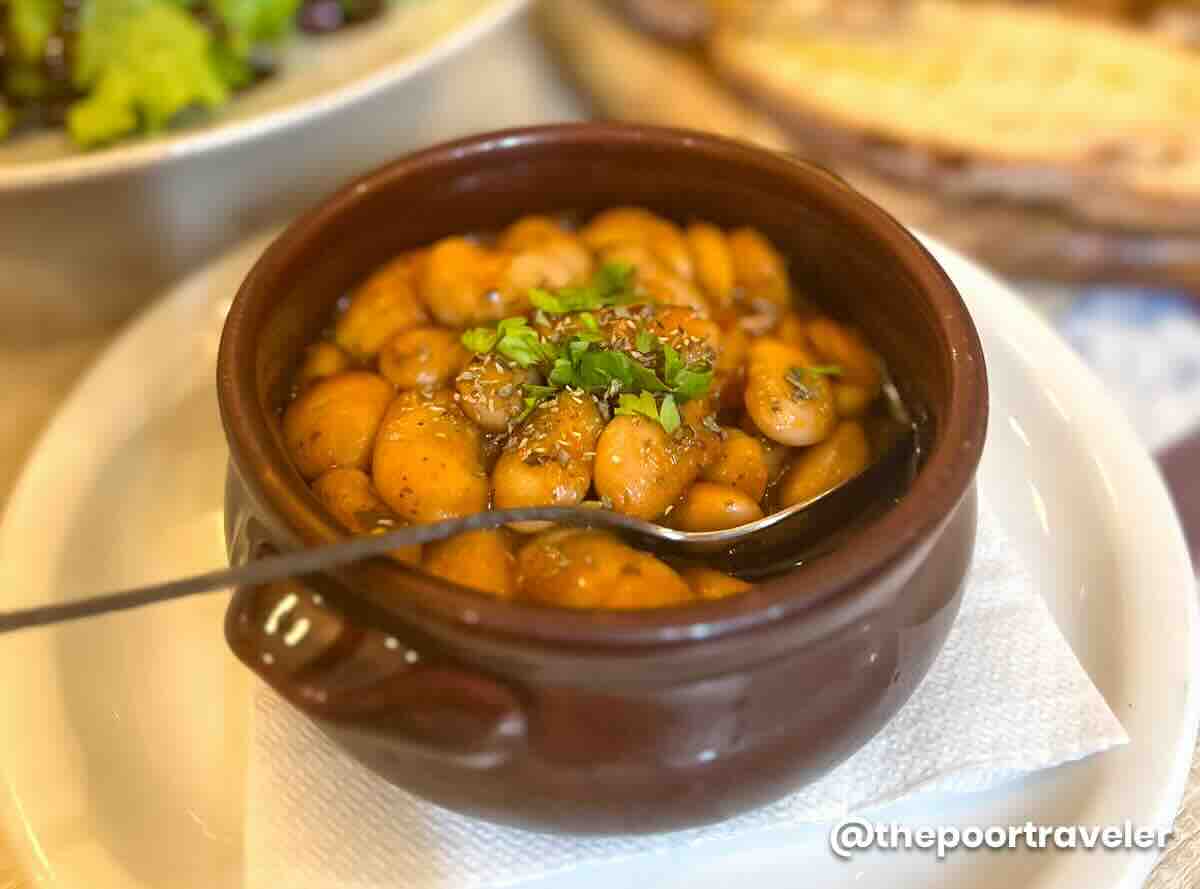Among all the destinations we’ve visited in Greece, we can confidently say that Kastoria gave us the most wonderful time.
For much of its history, the city built its identity and economy around a single product: fur. Once hailed as the fur capital of Greece, Kastoria was a city of furriers — skilled artisans who crafted, repaired, and sold fur garments. Many believe that the city’s very name is derived from kastoras, the Greek word for “beaver”, which was a primary source of fur.
For generations, fur was the lifeblood of Kastoria’s economy. Walk around today and you’ll still spot fur stores and workshops scattered across the city — some family-run like Almahats, and others larger in scale, such as Vitaniolis or Soulis. But while the legacy lives on, the once-booming industry has slowed significantly. We were told that as of our 2023 visit, only 16 masters remained who could perform one of the most intricate tasks in the trade: skin matching, a skill that takes years, even decades, to perfect.
With the world moving away from fur, many locals have begun shifting to new opportunities, and one promising avenue is tourism.
Set on a stunning lakeside peninsula in Northern Greece, Kastoria may be a bit out of the way, but it’s that very fact that makes it so special. Travelers who go off the beaten path are rewarded with a peaceful, authentic experience filled with natural beauty, deep-rooted culture, and historic charm. As word spreads, it won’t be long before more tourists discover what this captivating city has to offer, so now is the perfect time to visit. Here are just some of the best places to visit in Kastoria.
Lake Orestiada
Because it lies at the very heart of the Kastoria regional unit, Lake Orestiada is often referred to simply as Kastoria Lake or the Lake of Kastoria. But its more poetic name, Orestiada, harks back to Greek mythology, specifically the oriades — mountain nymphs believed to dwell in the highlands. And honestly, standing by its shores, it’s easy to believe there’s still a touch of magic lingering in the air.
This lake is nothing short of enchanting in every season. In autumn, the trees along its banks explode in fiery colors, making it a dream for photographers and leaf-peepers alike. In winter, it freezes over, turning into a silvery sheet of ice, while spring and summer welcome boats gliding across its glassy surface and locals gathering at its edges to soak in the scenery.
Fed by nine small rivulets and underground springs, the lake is ancient — formed over 10 million years ago — and teeming with life. It’s home to over 200 bird species, from elegant silver pelicans to mute swans, mallards, herons, and more, making it a haven for birdwatchers. There’s even a charming little spot where you can feed ducks, adding a touch of whimsy to your stroll.
Some of our favorite moments in Kastoria were the simplest — walking along the lakeside with a coffee in hand. In a world increasingly overrun by mass tourism, Kastoria offers a rare kind of serenity, and Lake Orestiada embodies that peace in every ripple and breeze.
Dragon’s Cave
One of the must-see lakeside attractions in Kastoria is the awe-inspiring Dragon’s Cave, easily one of the city’s most fascinating natural wonders. Its name stems from a local legend, which tells of a dragon that once made the cave its lair — and fittingly, one of the rock formations inside even resembles the mythical beast!
But the real story here is geological. Nature has been working on this cave for millions of years, carving it about 300 meters deep into the limestone hill by the lake. Surprisingly, it wasn’t discovered until the 1940s, when the adjacent road was constructed. Since then, scientists have uncovered a hidden world within — underground lakes, tunnels, and majestic chambers adorned with stalactites and stalagmites. It appears untouched by humans until its modern discovery, but researchers did find bones of cave bears, believed to have gone extinct over 10,000 years ago.
The best part? You don’t need to be an experienced hiker to explore it. The entrance is right by the road, and the entire cave has a well-maintained visitor’s trail, making it accessible and safe for just about anyone. It’s like stepping into a fantasy realm right in the heart of Kastoria.
Monastery of Panagia Mavriotissa
If you take a leisurely 10-minute lakeside walk northeast from the Dragon’s Cave, you’ll find yourself standing before one of Kastoria’s most historically significant sites — the Monastery of Panagia Mavriotissa. Kastoria is home to 72 churches and chapels, many dating back to the Byzantine era, but this particular gem is among the oldest and most storied.
Constructed in the 11th century, the monastery was built during the reign of Byzantine Emperor Alexios I Komnenos. It served as a tribute to the Virgin Mary, in gratitude for the victory of Commander George Palaiologos over Norman forces in 1083. Its main structure is a timber-roofed basilica.
Inside, you’ll be captivated by centuries-old frescoes, including a haunting depiction of the Apocalypse. Although the interior artwork has been well-preserved, the exterior frescoes, dating to the 13th century, suffered damage during the Ottoman era. Notably, many of the painted figures had their eyes deliberately scratched out, a heartbreaking reminder of the site’s turbulent past.
Just across the monastery, you’ll also meet an ancient companion to this holy site: a 900-year-old plane tree. With a circumference of 8.5 meters and standing 67 meters tall, it towers like a silent sentinel, bearing witness to nearly a millennium of history, devotion, and change. It’s a peaceful and powerful stop that beautifully captures the soul of Kastoria.
Byzantine Churches
When we first drove around Kastoria, it wasn’t the lake or the mansions that grabbed our attention but the small, weathered chapels that seemed to have frozen in time. Our guide Haris told us that they have almost 80 Byzantine churches and chapels.
Honestly, we initially thought that he meant eighteen, but the city itself would clarify that for us as we wandered deeper into its neighborhoods. The chapels kept appearing until our informal count easily surpassed eighteen. That’s when it hit us: Kastoria’s soul is etched in the walls of its 80 churches, not only serving as a religious but also historic and cultural monuments.
Some are grand and open to the public, while others are modest and closed off, still cherished as private places of worship by families who have passed them down through generations. Whether elaborately frescoed or humbly bare, they all tell pieces of the same story: a city where faith, history, and identity intertwine seamlessly, standing strong through time.
Aside from Panagia Mavriotissa, here are other Byzantine churches:
- Panagia Koubelidiki or Kastriotissa (10th century)
- Agios Stefanos (Mid-9th century)
- Agioi Anargyroi (10th century)
- Agios Georgios Omorfokklisias (12th century)
- Monastery of Pammegistoi Taxiarches of Tsouka (13th century)
- Church of the Dormition at Zevgostasi (15th century)
Another postcard-perfect stop is the Holy Church of Saint Nicanor, a newly built gem near Esperos Palace Hotel. Our friend Ces even found joy picking flowers in a nearby empty lot — just one of those quiet, charming moments that Kastoria surprises you with.
The Hill of Prophet Elias
All around Kastoria, there are peaceful corners and hilltop lookouts offering sweeping views of the lake wrapping around the city. But one of the most accessible is the Hill of Prophet Elias, named after the miracle-working saint and patron of tailors and fur traders.
The most striking structure here is the Church of Prophet Elias, a serene spot that overlooks the entire city. But the complex is not just for prayer. Near the church is the Profitis Ilias Lounge Café, a cozy hilltop hideout with panoramic glass walls and plush couches.
Despite the rain during our visit, the view was still breathtaking and the moody weather only added to the charm. Thanks to Kristos, the friendly owner, we warmed up with three kinds of hot chocolate: classic, strawberry, and cookies and cream. It’s a gem of a spot and you shouldn’t miss it if you’re in town.
Agios Athanasios
Agios Athanasios offers an even higher vantage point, where you can see the Church of Prophet Elias in the foreground, the shimmering lake in the middle, and the peninsula stretching out in the background, making a beautiful composition of layers. We were lucky to visit in spring, when the hillside bursts into color with a blanket of yellow flowers.
You’ll know you’re in the right place when you spot Gaitanis Meat House, a go-to spot for carnivores craving burgers and steaks. Right next to it is a dramatic stack of boulders, which is an epic photo spot, but do tread carefully! Just a short walk away, you’ll also find the Mountain Theater (Theatro Vounou), a charming open-air amphitheater that occasionally hosts performances.
Dispilio
Let’s head back down from the mountains and drive about 20 minutes outside Kastoria to Dispilio, a quiet village with a truly ancient past. Nestled on the banks of Lake Orestiada, it is home to one of the most important archaeological sites — the oldest known lake settlement in Europe, dating all the way back to 5260 BCE. Meaning it existed during the Middle Neolithic age, and it was estimated to be home to about 3,000 individuals.
Discovered by a group of fishermen in 1932 after a drought revealed some of its remnants, the site has since unearthed thousands of artifacts, including bones, ceramics, and the intriguing Dispilio tablet, which a wooden plaque inscribed with markings. Today, visitors can explore a reconstructed lakeside village, complete with thatched huts, in an open-air museum that feels both educational and immersive. We even shared the site with a bunch of schoolkids on a field trip! Before you leave, swing by the little shop by the exit for a souvenir.
Nestorio
Farther southwest lies the neighboring village of Nestorio, a place steeped in myth and history. According to legend, it was founded by Nestor, son of King Agamemnon, who fled here at the foot of Grammos Mountain with his brother Orestes. Archaeological finds point to Neolithic origins, and some even believe that a young Alexander the Great was once hosted here, learning the art of war.
Much like Kastoria, Nestorio is dotted with historic churches, but we made our way up to the Church of the Holy Spirit, perched on a hill with sweeping views. The climb was worth it — not just for the peaceful chapel but also for the panoramic scenery of the village. From here, you can spot spot some of its landmarks, including the four-star Afkos Grammos Boutique Hotel Resort.
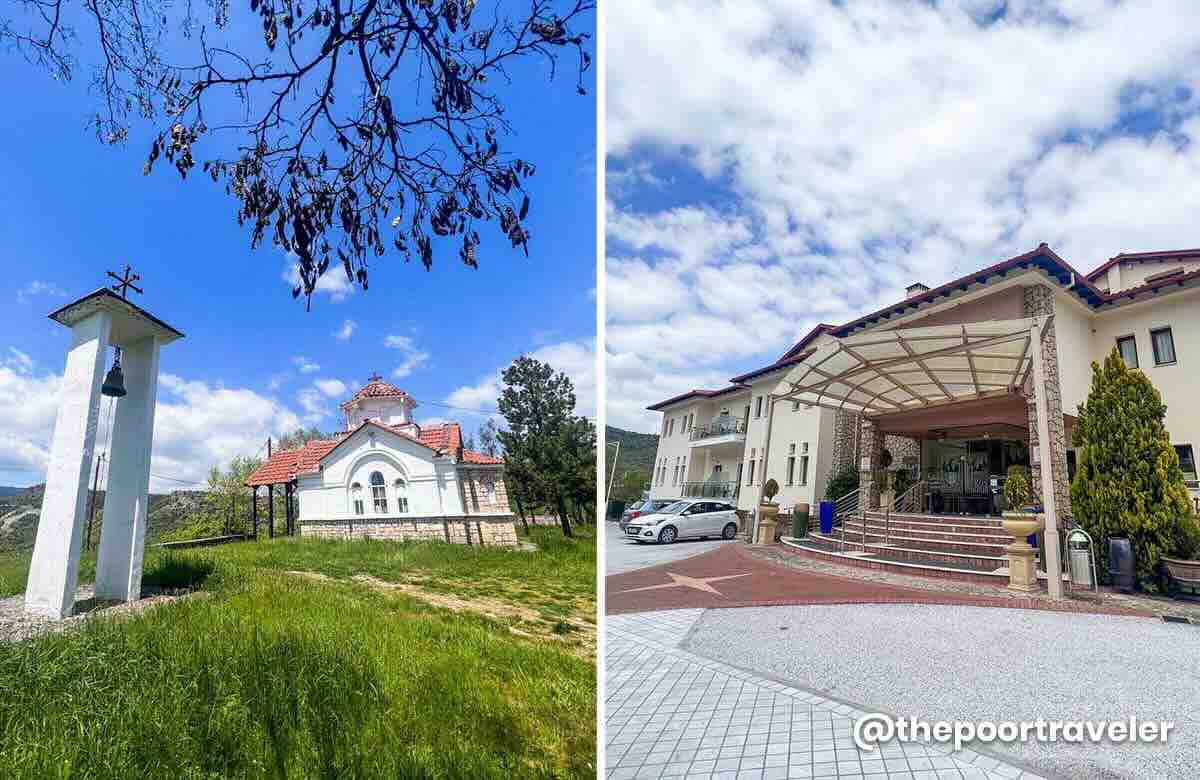
This upscale hotel boasts a restaurant that serves delicious traditional Greek dishes, a terrace with panoramic views, and well-appointed rooms perfect for unwinding, especially when the village gets busy. And when does that happen, you ask? Two words: River Party.
River Party (River Aliakmon)
River Party is the biggest music festival in all of Greece, and it all goes down right here in Nestorio, along the picturesque banks of the Aliakmon River. Every year in August, this sleepy mountain village comes alive as around 50,000 music lovers gather to dance, sing, and celebrate under the summer sky.
But the beauty of the river doesn’t fade when the crowds leave. On our visit, we were lucky to be joined by Architect Haris Mintzias, whose father built the now-iconic stone bridge that stands as a symbol of the event. When it needed to be reinforced years later, Haris took on the task himself. He even gave us a little demo on proper stone skipping, though, let’s just say, it’s harder than it looks!
Moni Panagias Kleisouras
On the far side of Lake Orestiada, deep in the mountains and reached via winding roads, lies the Moni Panagias Kleisouras Monastery in the municipality of Kleisoura. Built in the 14th century, this historic site once doubled as a fortress, but it is best known in the Greek Orthodox faith as the home of Saint Sophia.
It is believed that the Virgin Mary, or the Panagia, appeared to Saint Sophia multiple times and eventually led her to this very monastery. She lived a humble life here, even sleeping in the fireplace of the kitchen, and was known for performing miracles that drew pilgrims to the site. After her passing on May 6, 1974, the monastery became her final resting place, and her relics remain enshrined here.
We were incredibly lucky because our visit happened to fall on May 6, so we got to witness the annual glorification ceremony held in her honor.
Paraskevi Dragota Church
Back in the city center, we stumbled upon another charming chapel — the Saint Paraskevi Sint Paraskevi Dragota Orthodox Church. While it’s not one of the famed 80 Byzantine churches, it still holds over 120 years of history, built in 1899 and nestled quietly in a residential corner just a few blocks from the lake.
It wasn’t on our original itinerary, but our host, Sonia, brought us here, which is one of her favorite spots in the city. She’d often pass by, admiring it from the outside, captivated by the candle always lit by the families who look after the church. We were about to leave when the kind caretaker, Sir Giorgos, invited us in and gave us a tour! He shared stories about the church’s past and even let us peek into the sanctuary behind the iconostasis, and pointed out the original columns that are still standing. The interior, adorned with beautiful icons and artwork, was absolutely captivating.
This is what makes Kastoria so special. Everywhere you turn, there’s a piece of history quietly waiting to be discovered.
Food Trip
Out of all the places we explored in the Balkans, Kastoria gave us some of the best meals we’ve ever had. The ingredients here are just on another level — from the prized Florina peppers to the succulent lamb chops, everything tasted incredibly fresh and full of flavor.
If you’re planning to eat your way through the city, here are some traditional dishes you absolutely must try:
- Sarmades. These are pickled cabbage leaves stuffed with minced meat and rice. It’s a staple in many households, and no two versions are exactly the same. Each family or taverna has its own twist, so it’s worth trying more than once!
- Kastorian Giant Beans. These massive legumes are also a local staple you shouldn’t miss, and yes, they really are giant. They have a thin skin, but they need to be soaked overnight to reach the right softness. Once prepped, they’re typically baked with herbs, tomatoes, and meat.
- Batzo (or Bajo). This is a brined cheese that’s often prepared saganaki-style. This is one of our absolute favorites. Some restaurants top it with a fried egg, while others fry it to a crisp. No matter how it’s cooked, its distinct salty flavor always steals the show.
And those are just the appetizers! For the main course, don’t expect a lot of seafood here. Kastoria is all about the meats. A platter loaded with grilled goodies is the go-to. Lamb, beef, chicken, pork, and even wild boar. Think juicy souvlaki, smoky kebabs, savory sausages — all grilled to perfection. It’s an absolute meat feast and a must-try for carnivores!
For dessert, one thing we noticed is that candied fruits or fruit confit are quite popular, both in homes and restaurants. It’s a traditional way of preserving fruits like cherries, oranges, and even citron or lime, which was the highlight of a signature cake we tried in Krystallopigi, near the Albanian border. It’s a sweet treat that you definitely shouldn’t miss!
Best Hotels in Kastoria
While we were in Kastoria, we were able to check out three of its best hotels. Two of them are historic and traditional, both over 200 years old, while one is more modern and minimalist. We also included a few properties in other villages outside of the city center but near some attractions.
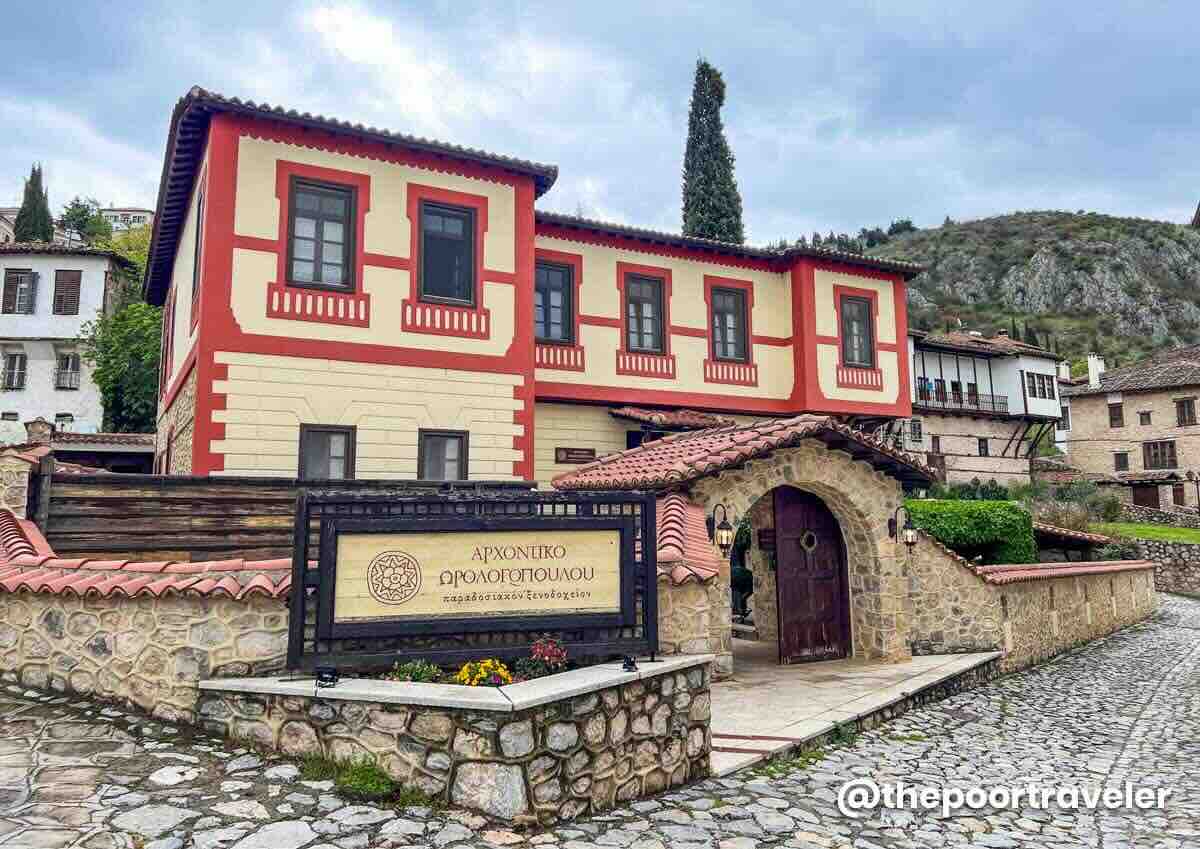
- Hotel Orologopoulou Mansion, a 250-year-old mansion converted into a hotel with modern room amenities in the city center. Check Rates & Availability!
- Vergoula’s Mansion, a short walk from Orologopoulou and one of the oldest hotels in Kastoria. Check Rates & Availability!
- Esperos Place Luxury and Spa Hotel, a contemporary and elegant property in the city center. Check Rates & Availability!
- Afkos Grammos Boutique Hotel Resort, a great option if you’re heading to Nestório for the iconic River Party music festival. Check Rates & Availability!
- Krystal Resort, tucked in a peaceful village of Krystallopigi, perfect for those planning to cross the Greece–Albania border. Check Rates & Availability!
Search for more Kastoria Hotels!
Have Peace of Mind While Traveling!
Getting a travel insurance is optional, but we highly recommend this, especially when traveling abroad. Travel can be unpredictable, and though we hope we’ll never use it, having it gives us peace of mind in case of unexpected delays, cancellations, or emergencies.
For international destinations, consider PGA Sompo’s TravelJOY Plus insurance. You can GET IT HERE. Don’t forget to use WORTHIT for a special affordable rate.
Updates Log
2025 8 5 – First uploaded





